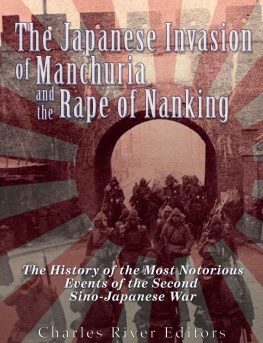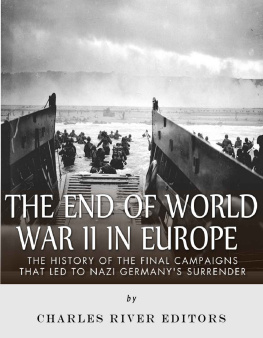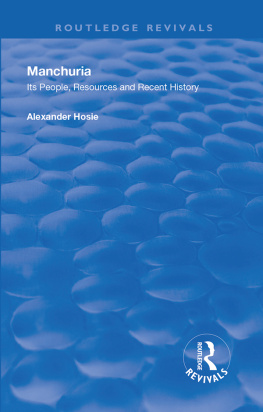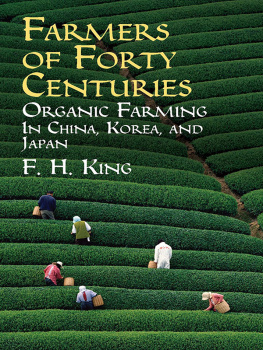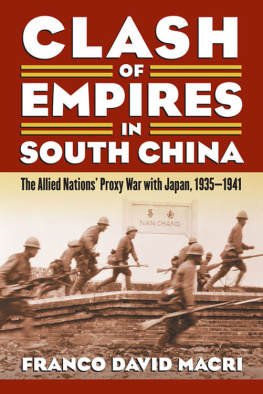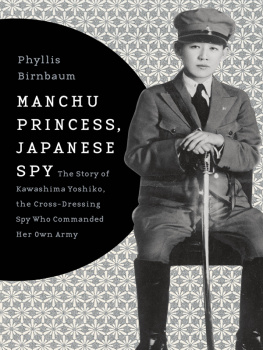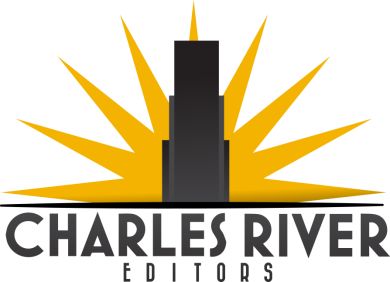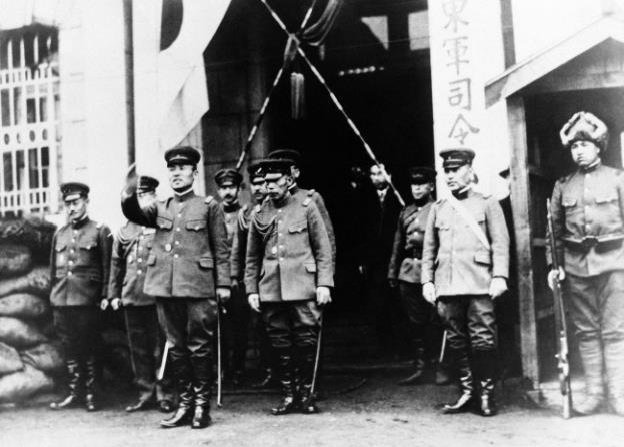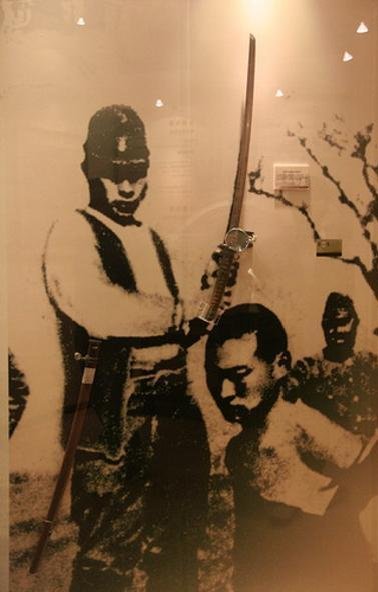Charles River Editors - The Japanese Invasion of Manchuria and the Rape of Nanking: The History of the Most Notorious Events of the Second Sino-Japanese War
Here you can read online Charles River Editors - The Japanese Invasion of Manchuria and the Rape of Nanking: The History of the Most Notorious Events of the Second Sino-Japanese War full text of the book (entire story) in english for free. Download pdf and epub, get meaning, cover and reviews about this ebook. year: 2016, publisher: Charles River Editors, genre: Science. Description of the work, (preface) as well as reviews are available. Best literature library LitArk.com created for fans of good reading and offers a wide selection of genres:
Romance novel
Science fiction
Adventure
Detective
Science
History
Home and family
Prose
Art
Politics
Computer
Non-fiction
Religion
Business
Children
Humor
Choose a favorite category and find really read worthwhile books. Enjoy immersion in the world of imagination, feel the emotions of the characters or learn something new for yourself, make an fascinating discovery.
- Book:The Japanese Invasion of Manchuria and the Rape of Nanking: The History of the Most Notorious Events of the Second Sino-Japanese War
- Author:
- Publisher:Charles River Editors
- Genre:
- Year:2016
- Rating:5 / 5
- Favourites:Add to favourites
- Your mark:
The Japanese Invasion of Manchuria and the Rape of Nanking: The History of the Most Notorious Events of the Second Sino-Japanese War: summary, description and annotation
We offer to read an annotation, description, summary or preface (depends on what the author of the book "The Japanese Invasion of Manchuria and the Rape of Nanking: The History of the Most Notorious Events of the Second Sino-Japanese War" wrote himself). If you haven't found the necessary information about the book — write in the comments, we will try to find it.
Includes accounts of the events written by people on both sides
Includes online resources and a bibliography for further reading
Includes a table of contents
Though scarcely mentioned in the world of early 21st century politics, Manchuria represented a key region of Asia during the first half of the 20th century. Once the heartland of the fierce Manchu empire, this northeastern Chinese regions rich natural resources made it a prize for nations in the process of entering the modern age, and three ambitious nations in the midst of such a transformation lay close enough to Manchuria to attempt to claim it: Japan, Russia, and China.
For countries attempting to shake off their feudal past and enter a dynamic era of industrialization, Manchurias resources presented an irresistible lure. With immense natural resources coupled to economic activity more concentrated than elsewhere in China, this region, abutting Mongolia, Korea, the Yellow Sea, and the Great Wall accounted for 90 percent of Chinas oil, 70 percent of its iron, 55 percent of its gold, and 33 percent of its trade. If Shanghai remained Chinas commercial center, by 1931 Manchuria had become its industrial center. (Paine, 2012, 15).
Thus, its not altogether surprising that Japans invasion of Manchuria in 1931 resulted from a long, complex chain of historical events stretching back to the late 19th century. Approximately 380,000 square miles in extent, or 1.4 times the size of the American state of Texas, Manchuria came into Imperial Russias possession in 1900 due to the Boxer Rebellion in China, but the Russians held it only briefly; their defeat in the Russo-Japanese War shook loose their control from important parts of Manchuria by the end of 1905.
The Japanese gained two important footholds in Manchuria thanks to their victory. One consisted of Port Arthur (renamed Ryojun by the Japanese), an economically and strategically vital harbor city on the Liaodung Peninsula, plus the peninsula itself. The other comprised the South Manchurian Railway, which the Russians gave to the Japanese as a prize of war, in lieu of a cash indemnity.
Three days of plundering traditionally befell cities taken by storm, a fate usually avoided by those surrendering before the first attacking soldier penetrated beyond the outer walls. In Europe and areas influenced by Enlightenment thinkers, this practice faded rapidly after the Napoleonic Wars. In 1937, however, as the Imperial Army of Japan invaded China, this custom returned in a horrifying new form the Rape of Nanking or the Nanking Massacre, a bloodbath lasting more than six weeks and possibly claiming more than a quarter of a million lives.
Even the Japanese participating in the Nanking Massacre provided no rationale for their actions. They made no effort to explain it as a measure to terrorize other Chinese cities into surrender, or even to extract the location of hidden valuables. Instead, the Rape appears on the page of history as a psychopathic orgy of sadism for sadisms sake. Insatiably driven by hatred and, apparently, an unabashed relish for cruelty, the Japanese soldiery abandoned any semblance of restraint.
Women of every age, from small children to ancient elders, suffered innumerable rapes, in many cases dying from the mass raping alone. Those who did not die from sexual assault suffered death in other forms shot, decapitated, or tortured to death once the soldiers found themselves sexually exhausted. Other women suffered fatal sexual torture involving the introduction of sharp foreign objects into their vagina or the placement of firecrackers or live grenades inside. Even Third Reich personnel in the city interceded in a sometimes futile effort to rescue victims from their tormentors.
This book chronicles two of the most infamous events of the 20th century.
**
Charles River Editors: author's other books
Who wrote The Japanese Invasion of Manchuria and the Rape of Nanking: The History of the Most Notorious Events of the Second Sino-Japanese War? Find out the surname, the name of the author of the book and a list of all author's works by series.

